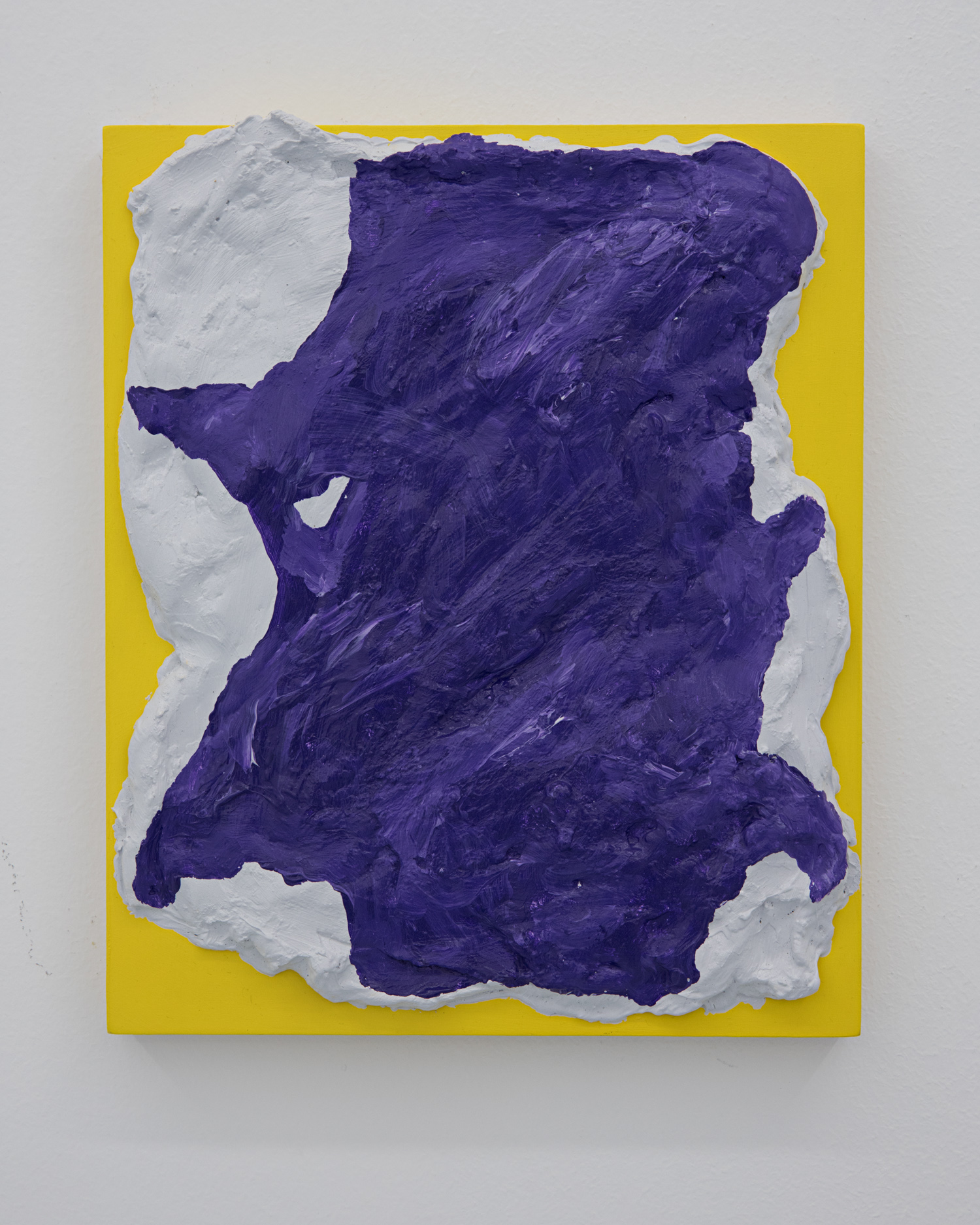Sean Bailey
Landscapes
4 September – 5 October 2019
“Like rooms from a memory; nebulous yet absolute, Sean Bailey’s latest solo exhibition Landscapes is a deluge of anamnesis. The palette is often lurid, reminiscent of Transformer robots, Voltron cartoons and Troll Dolls: archetypes of the 1980’s Australian childhood. But Landscapes feels less sentimental and more a series of abstruse recollections or bad premonitions. And self-referential or not, comprising 21 works, Landscapes evokes ruination on an intimate level.
The exhibition title Landscapes might suggest illimitable spans, however Bailey’s landscapes feel inescapable, at once noxious and finite. Swathes of flat colour lay against sculptural, painted surfaces and thick linear strokes amass, swirl and disband. There is, at times, a suggestion of terrain and flood maps; crude topographic depictions of land that are unworldly yet familiar. This is desolation in its most lucid state. A reoccurring form, resembling a spill, but spiked and manipulated at its edges, threatens the space it occupies. It is both alive and unhuman.”
- Cait Burgoyne, Landscapes, catalogue essay extract
Sean Bailey’s solo exhibitions include: Sydney Contemporary; RM, Auckland; First Draft, Sydney; and in Melbourne at Daine Singer, Gertrude Contemporary, Neon Parc, West Space, T.C.B., Joint Hassles and Clubs Project Space. He has participated in group exhibitions at University of Queensland Art Museum, Brisbane; Gambia Castle, Auckland; Special, Auckland; Amsterdam Biennial; Darren Knight Gallery, Sydney; CAST, Hobart; and in many Melbourne spaces including: Spring 1883 Art Fair, Gertrude Contemporary, Sutton Project Space, Hell Gallery, Bus Gallery, Utopian Slumps, T.C.B. and Seventh. As a musician he is known for playing in groups including Paeces, Wasted Truth, Vivian Girls, Lakes, TOL and TAX as well as running the private press label Inverted Crux. He has a BFA (2005) from the Victorian College of Arts and has been a studio artist at Gertrude Contemporary.

























